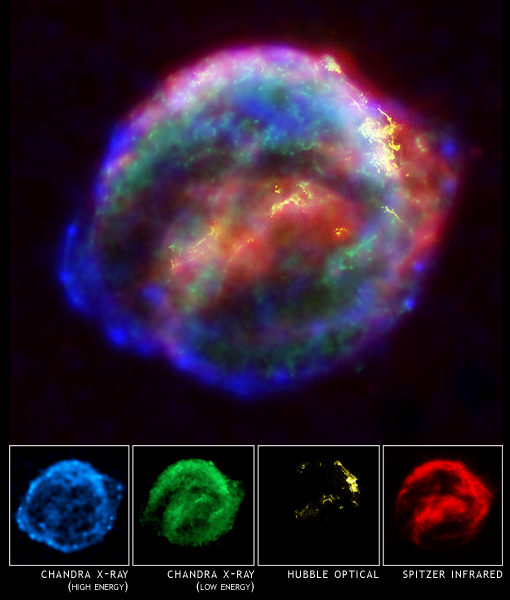
 |
 |
|
||||
|
Kepler's Supernova Remnant: The remains of a supernova first seen in 1604. Caption: This composite Chandra X-ray (blue and green), Hubble Space Telescope optical (yellow), and Spitzer Space Telescope infrared (red) image shows a cloud of gas and dust that is 14 light years in diameter and expanding at 4 million miles per hour (2,000 kilometers per second). The optical image reveals 10,000 degrees Celsius gas where the supernova shock wave is slamming into the densest regions of surrounding gas. The infrared image highlights microscopic dust particles swept up and heated by the supernova shock wave. The X-ray data show regions with multimillion degree gas, or extremely high energy particles. The higher-energy X-rays (colored blue) come primarily from the regions directly behind the shock front. Lower-energy X-rays (colored green) mark the location of the hot remains of the exploded star. Scale: Main image is 5 arcmin across Chandra X-ray Observatory ACIS Image |